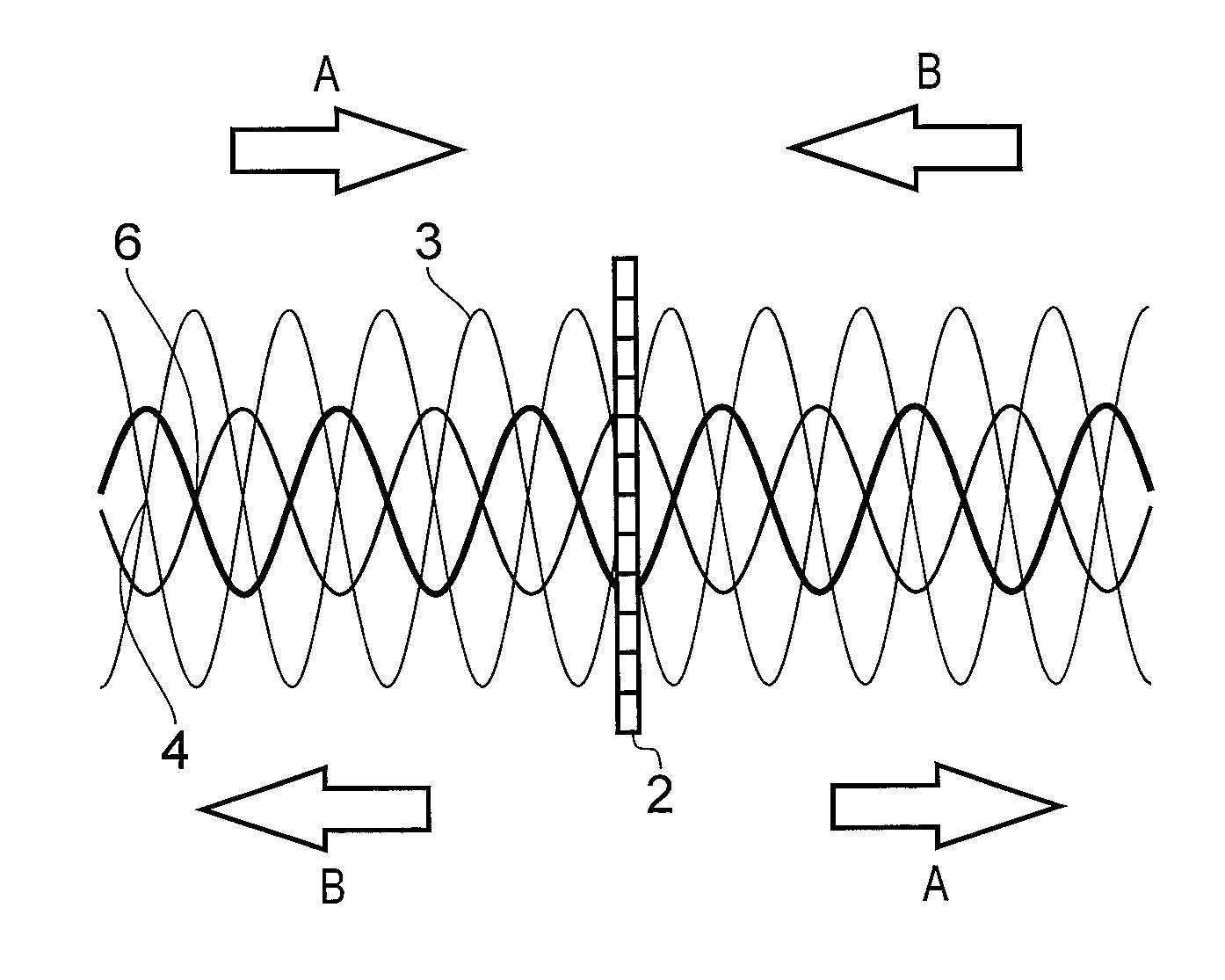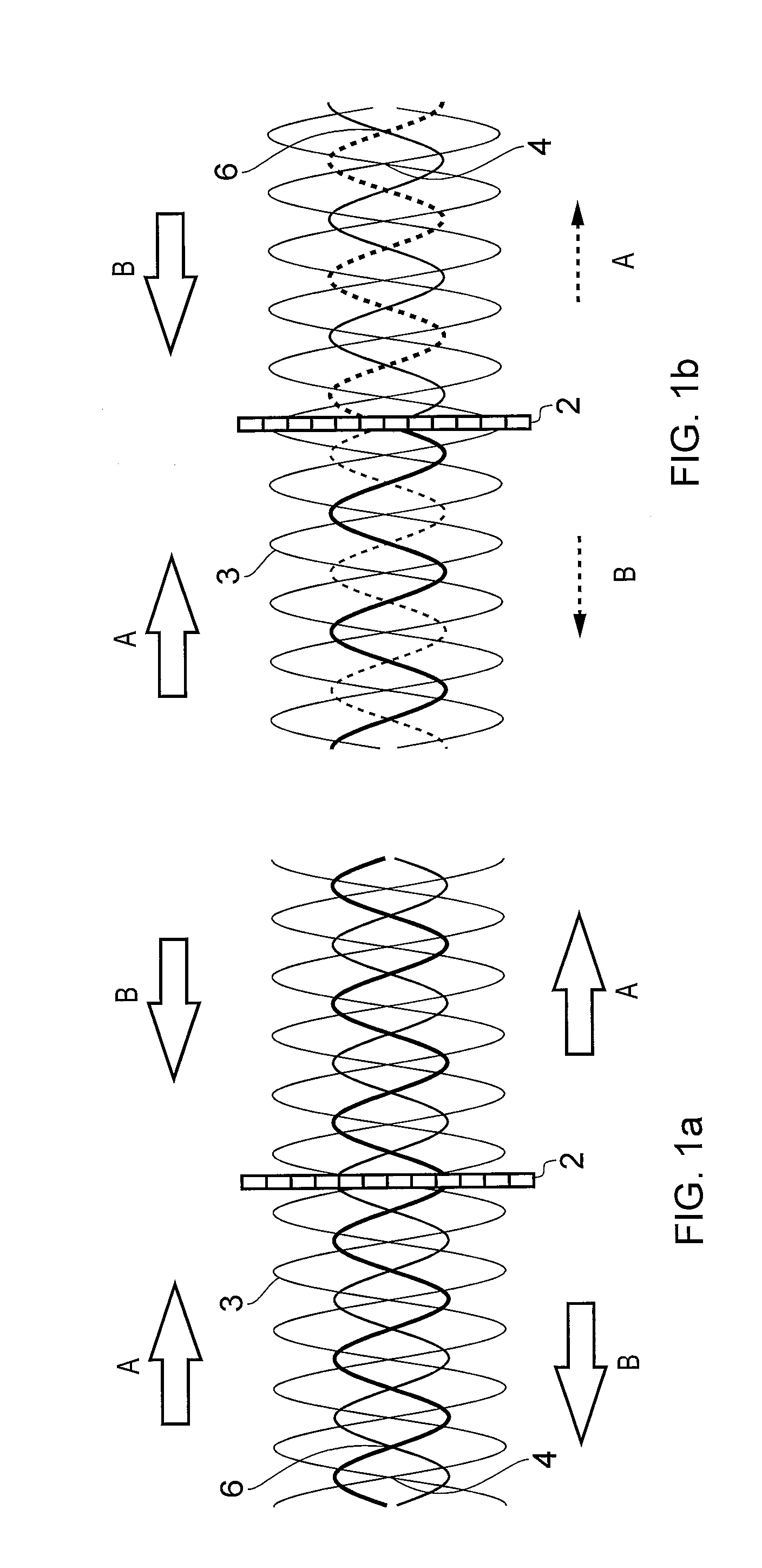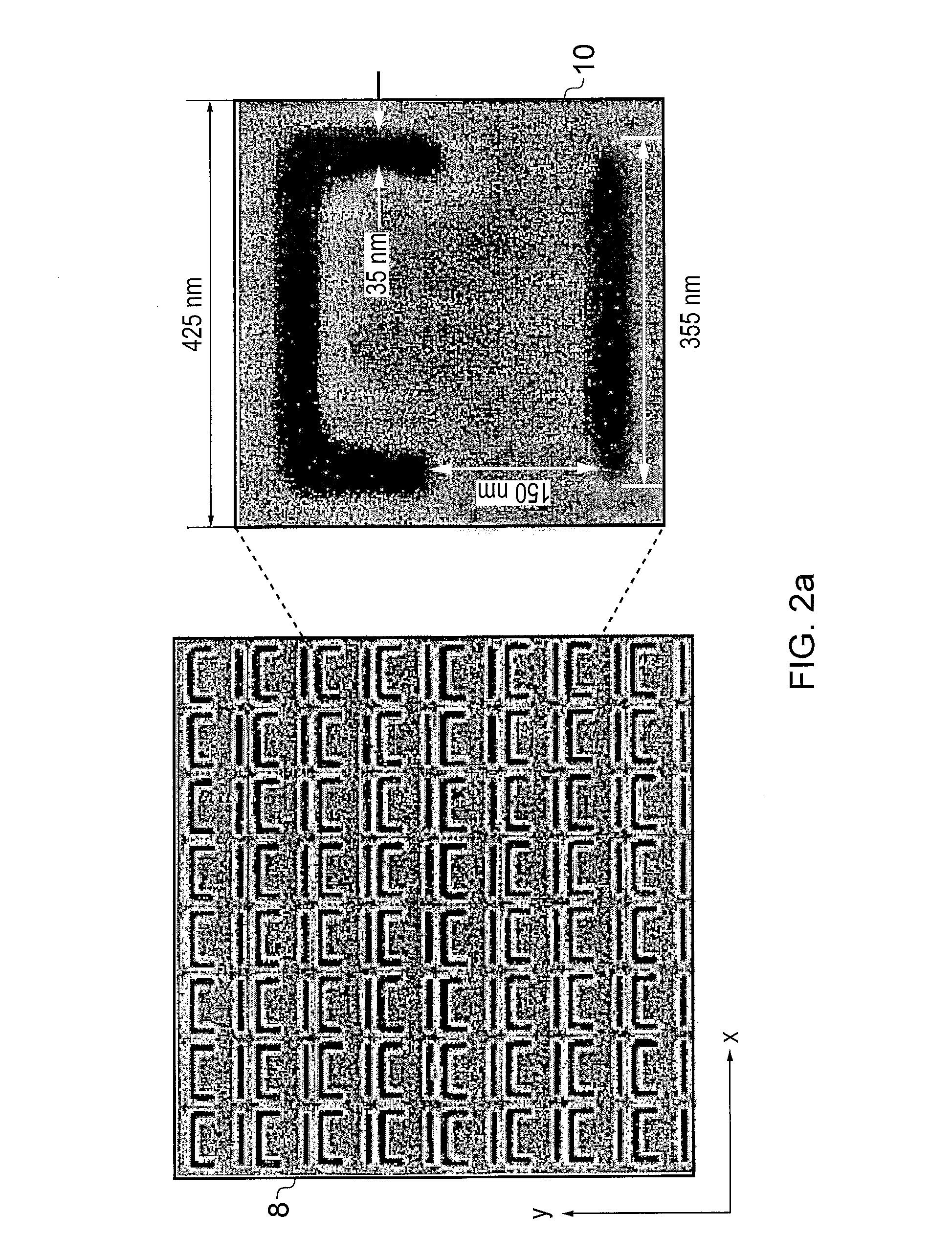Optical devices, systems and methods
- Summary
- Abstract
- Description
- Claims
- Application Information
AI Technical Summary
Benefits of technology
Problems solved by technology
Method used
Image
Examples
Embodiment Construction
[0048]In the following, we describe how first and second coherent light beams of arbitrarily low intensity are propagated in opposite directions to interact on a sub-wavelength thickness plasmonic sheet or layer such that the first beam is able to modulate the intensity of the second beam by modulating the phase and / or intensity of the first beam. Moreover, we show experimentally and illustrate by computer modelling that interference of counter-propagating beams can eliminate or substantially reduce plasmonic Joule loss of light energy in the plasmonic layer or, on the contrary, can lead to a near total absorption of light, depending on the mutual phase and / or intensity of the interacting beams. The coherent light beams can be of arbitrarily low intensity, since the effect being exploited is not a non-linear one.
[0049]FIGS. 1a and 1b are schematic drawings illustrating the operating principles of a device example to provide light-by-light modulation. The device operates using first ...
PUM
 Login to View More
Login to View More Abstract
Description
Claims
Application Information
 Login to View More
Login to View More - R&D
- Intellectual Property
- Life Sciences
- Materials
- Tech Scout
- Unparalleled Data Quality
- Higher Quality Content
- 60% Fewer Hallucinations
Browse by: Latest US Patents, China's latest patents, Technical Efficacy Thesaurus, Application Domain, Technology Topic, Popular Technical Reports.
© 2025 PatSnap. All rights reserved.Legal|Privacy policy|Modern Slavery Act Transparency Statement|Sitemap|About US| Contact US: help@patsnap.com



